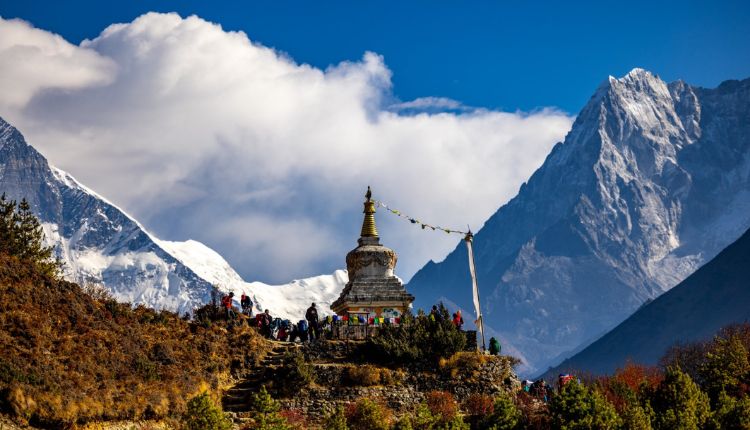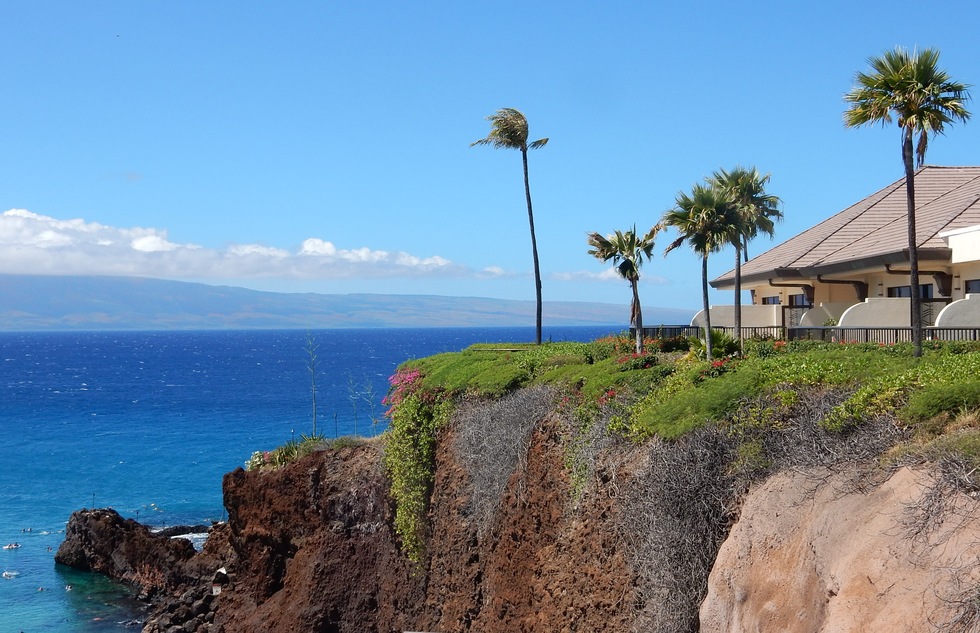Sagarmatha National Park
Nestled among the majestic peaks of the Himalayas, Sagarmatha National Park showcases the stunning beauty and impressive magnificence of the natural world.
Sagarmatha National Park is a paradise for those who seek adventure, love trekking, and appreciate the wonders of nature.
Sagarmatha National Park is where you will find Mount Everest, the world’s highest peak.
Renowned for its iconic landscapes, Sagarmatha National Park offers a variety of breathtaking experiences, with the Everest Base Camp trek standing out as one of the most popular and sought-after adventures.
This trek takes adventurers through the stunning terrain of the park, offering breathtaking views and the opportunity to stand at the base of the world’s highest peak, Mount Everest.
Explore the breathtaking scenery, diverse plant and animal life, and the iconic Everest Base Camp that make Sagarmatha National Park a true treasure in the heart of Nepal.
The captivating landscape of Sagarmatha National Park
The captivating landscape of Sagarmatha National Park unfolds in the northeastern part of Nepal, within the expansive Solukhumbu District.
Encompassing an area of 1,148 square kilometers, this untouched wilderness extends from the Dudh Koshi River in the south to the Nepal-China (Tibet) border in the north.
Notably, it shares boundaries with two other national parks, namely Qomolangma National Nature Preserve in Tibet and Makalu Barun National Park in Nepal.
Sagarmatha National Park was established in 1976 and recognized as a UNESCO Natural World Heritage site in 1979.
The park offers a diverse array of terrains, from dense forests adorned with rhododendron and pine to alpine meadows and frosty glaciers, Sagarmatha National Park is a visual feast.
In 2002, a 275 square kilometer buffer zone was added, and the Gokyo Lake within the park gained Ramsar Site status in 2007.
As you navigate its well-trodden paths, you will encounter cascading waterfalls, tranquil rivers, and emerald lakes reflecting the towering peaks in their crystalline waters.
This exceptional region is home to the world’s highest and fourth-highest peaks – Mount Everest (8,848.86 m) and Lhotse (8,516 m), respectively.
Additionally, there are numerous other peaks surpassing 6,000 meters, surrounded by Himalayan glaciers, high-altitude lakes, and rugged valleys.
Among the prominent peaks are Ama Dablam (6,812 meters), Thermasarkhu (6,608 meters), Kwangde (6,011 meters), and Khangtiaga (6,783 meters).
Sagarmatha National Park stands as a sanctuary where nature’s grandeur and the majesty of towering peaks converge in a breathtaking spectacle.
Flora and Fauna of Sagarmatha National Park
Sagarmatha National Park serves as a sanctuary for a remarkable variety of plant and animal life, with many species being unique to this specific region.
The park’s biodiversity is evident in its diverse flora and fauna.
In the subalpine zones, dense forests thrive with fir, Himalayan birch, rhododendrons, and junipers.
As one ascends beyond 5,000 meters, the alpine region reveals mosses and lichens, showcasing the adaptability of life in these extreme conditions.
It is estimated that approximately 1,000 floral species flourishes within the boundaries of Sagarmatha national park.
The park is also home to elusive species, including the Himalayan tahr, red panda, bearded vulture, snowcock, musk deer, and various pheasants.
Snow leopards roam above 3,500 meters, while Indian leopards inhabit the lower regions.
The snow leopard, known for its elusive nature, and the charming red panda have made these mountains their habitat.
The Himalayan tahr gracefully grazes on the slopes, contributing to the park’s unique wildlife panorama.
Amidst the rugged terrain, the vibrant blooms of rhododendron and magnolia bring a burst of color, harmonizing nature’s beauty with its formidable surroundings.
Prominent mammals include the elusive snow leopard, musk deer, and the endearing red panda.
Among the noteworthy bird species are the Himalayan Monal and Blood Pheasant.
The park is also characterized by major tree species such as pine, hemlock, fir, juniper, and birch.
The local economy is intertwined with tourism, agriculture, animal husbandry, business, and mountaineering, reflecting the delicate balance between nature conservation and human activities in this extraordinary region.
Cultural Encounters
Amidst the awe-inspiring natural wonders of Sagarmatha National Park lies a cultural tapestry equally as captivating.
The Sherpa people, renowned for their resilience and mountain-climbing expertise, call these highlands home.
Traditional Sherpa villages, including Namche Bazaar, Khumjung, and Thame, dot the landscape, each exuding its unique charm.
The architecture of these villages is a testament to the harmonious blend of Tibetan and Sherpa styles, featuring intricately carved wooden facades, fluttering prayer flags, and mani walls.
Throughout the park, monasteries, chortens, and prayer flags stand as symbols of the deep spiritual connection the Sherpas share with the mountains.
As you trek, the opportunity to interact with Sherpa communities arises, providing a chance to immerse yourself in their rich traditions and experience their warm hospitality.
Various monasteries and Gompas serve as sanctuaries for the Sherpas, hosting rituals and religious ceremonies.
Among them, the Tengboche Monastery, the largest gompa in the Khumbu region, stands as a spiritual hub for the local Sherpa community and a refuge for trekkers and mountaineers.
Set against the backdrop of snow-capped peaks, including the majestic Ama Dablam, the monastery’s enchanting setting adds to the cultural richness that defines Sagarmatha National Park as not only a natural marvel but also a cultural treasure.
Preservation and Sustainability
Preserving the pristine beauty of Sagarmatha National Park is an integral part of its ethos, and as visitors, we bear the responsibility to tread lightly and minimize our impact on this delicate ecosystem.
Local initiatives and regulations play a crucial role in ensuring the preservation of the park’s natural integrity, and sustainable tourism practices are actively promoted to safeguard its future for generations to come.
The delicate ecosystem of Sagarmatha National Park faces challenges, particularly due to the adverse effects of climate change and the increasing footprint of human activities.
Recognizing these challenges, efforts are underway to implement conservation strategies and raise awareness about the importance of environmental sustainability.
It is imperative that we, as stewards of this remarkable landscape, embrace responsible tourism practices, respect the local culture, and contribute to the ongoing conservation endeavors.
By doing so, we play a vital role in ensuring that Sagarmatha National Park remains a sanctuary of natural wonders, both for present enjoyment and for the legacy we leave to future generations.
Permits
To explore Sagarmatha National Park, acquiring a permit is essential.
This permit can be obtained at the Sagarmatha National Park Entry Gate in Monjo or the Tourist Service Center, Bhrikutimandap, Kathmandu.
The exact cost varies based on your nationality.
For Nepali citizens, the permit costs NRS. 100 per person, for SAARC citizens, it is NRS 1,500 per person, and for others, the fee is NRS 3,000.
It is important to note that this cost must be paid in Nepalese Rupees (NPR), as only Nepali currency is accepted in the Everest region.
To acquire the permit, you will need to present your passport.
This permit system is in place to support conservation efforts and ensure a controlled and sustainable influx of trekkers, ultimately contributing to the preservation of the park’s pristine environment.
It underscores the commitment to responsible tourism and helps maintain the delicate balance between exploration and environmental conservation in Sagarmatha National Park.
Iconic landmarks
Namche Bazaar
Namche Bazaar stands at an elevation of 3,440 meters (11,286 feet) above sea level and is situated within the confines of Sagarmatha National Park in Nepal.
This vibrant town of Namche Bazaar serves as a vital trading center for the Khumbu region and a popular pitstop for tourists embarking on journeys iconic treks like Everest base camp, Gokyo ri etc.
Renowned as a tourist hub, Namche Bazaar offers a one-stop destination where trekkers can procure everything needed for their expedition.
It is often referred to as the “Sherpa capital.”
Namche Bazaar holds the distinction of being the gateway to Mount Everest, serving as the starting point for numerous trekking adventures, expeditions, and other thrilling activities.
The bustling town pulsates with the energy of Everest region adventures, featuring Wi-Fi-linked cafes, restaurants, shops offering souvenirs and trek gear, and even an Irish pub.
It is a lively and essential hub for those venturing into the magnificent landscapes of the Everest region.
Everest Base Camp
Embarking on the trek to Everest Base Camp in Sagarmatha National Park is a truly extraordinary adventure that leaves an indelible mark on the hearts of both trekkers and mountaineers.
The excitement begins in Lukla, a charming mountain town renowned for its legendary airstrip, and unfolds through enchanting Sherpa villages, suspension bridges, and challenging trails.
Step by step, the trek brings you closer to the majestic Himalayas, intensifying the thrill as you approach the base camp perched at a staggering altitude of 5,364 meters (17,598 feet) above sea level.
The Khumbu Glacier
The Khumbu Glacier, originating at an awe-inspiring altitude of 7,600 meters (24,900 feet), stands as the highest glacier globally and holds the distinction of being the largest glacier in Nepal.
This impressive glacier encompasses the Khumbu Icefall, situated at the western edge of the lower Western Cwm.
The Khumbu Icefall poses a formidable challenge for climbers pursuing the summit of Everest via the southern standard route.
Trekkers on the journey to Everest Base Camp traverse the Khumbu Glacier during the final stretch of their expedition, encountering the icy terrain that serves as a prelude to the towering heights of the world’s highest peak.
Gokyo lakes
Within Sagarmatha National Park are the breathtaking Gokyo Lakes, a collection of mesmerizing turquoise glacial lakes embraced by snow-capped peaks.
The Gokyo Ri trek, within this pristine landscape, unfolds an enchanting panorama of the Everest massif, treating trekkers to a spellbinding visual feast of majestic mountains and serene glacial waters.
Kala patthar
Kala Patthar is a renowned vantage point celebrated for its breathtaking panoramic vistas of the majestic Himalayan peaks, situated at an elevation of 5,555 meters.
This includes the awe-inspiring sights of Mount Everest, Lhotse, Nuptse, Ama Dablam, and several others.
As you cannot view Mount Everest from the Everest base camp it is frequently visited by trekkers on their journey to Everest Base Camp.
Notably, Kala Patthar holds the distinction of being the highest point in Nepal that does not require a climbing permit.
In conclusion, Sagarmatha National Park emerges as a treasure trove of natural wonders, nestled amidst the Himalayan peaks in the northeastern part of Nepal.
From the iconic Everest Base Camp trek to the enchanting Gokyo Lakes, the park unfolds a tapestry of diverse landscapes, ranging from lush forests to icy glaciers.
Home to the world’s highest peak, Mount Everest, the park showcases an array of flora and fauna, some endemic to the Everest region.
The Khumbu Glacier and Icefall, along with the challenging ascent to Kala Patthar, add an element of adventure to the journey.
Namche Bazaar, a bustling trading center and gateway to Everest, provides a vibrant hub for trekkers and adventurers.
Sagarmatha National Park, with its UNESCO World Heritage status, not only preserves the pristine beauty of the Himalayas but also beckons those seeking the thrill of high-altitude adventures and the serenity of untouched wilderness.




